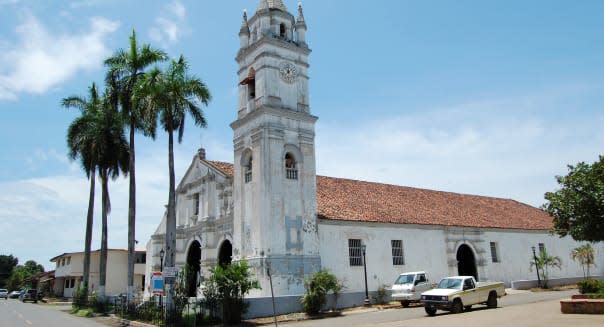Retire in Historic La Villa De Los Santos, Panama

By Kathleen Peddicord
November in Panama is the Mes de la Patria, the month when Panamanians celebrate their country's road to freedom. Nov. 3 is the first of two independence days, this one remembering the break from Colombia in 1903. This is followed by Flag Day on Nov. 4 and Colon Day on Nov. 5. That last is like Columbus Day in the United States, remembering Christopher Columbus's arrival in the New World.
Then comes the Primer Grito de la Independencia on Nov. 10. In English, this means the first cry for independence. It is the starting point in Panama's history as an independent nation, and it took place in the village of La Villa de Los Santos on the eastern coast of Panama's Azuero Peninsula. On this day in 1821, the people of Los Santos wrote a letter to Simón Bolívar complaining about the Spanish and asking for some revolutionary assistance. Eighteen days later, on Nov., 28, the country officially declared its independence from Spain. Needing a protector to help face whatever conflict might follow, the fledgling country aligned itself with Bolívar as part of the Gran Colombia. That didn't work out so well from Panama's point of view. Thus, there was a second declaration of independence about 80 years later.
%VIRTUAL-WSSCourseInline-723%Understandably, La Villa de los Santos holds a sentimental spot in the heart of every Panamanian. But few people outside the country have heard of it. In this part of the country, Pedasi, Las Tablas and Chitre get all the attention. However, depending what kind of lifestyle you're looking for, La Villa, as it's known among the locals, could top them all.
La Villa was home to the oldest civilizations in Panama almost 11,000 years ago. The Smithsonian Institution manages an archeological dig here. It was only about 500 years ago that the Spanish Conquistadors arrived on the scene.
La Villa, with its long and noteworthy history, is today a sleepy town that has managed to retain its authentic local charm. Unlike Pedasi and Las Tablas, La Villa has no established community of expats or foreign retirees. Living in La Villa, your neighbors would be Panamanians and your way of life would be local.
The cost of living in La Villa is exceedingly affordable, and has much lower costs than more established communities of expat retirees. But you still get to enjoy the same package of benefits and tax breaks for Panama resident retirees. When you want a dose of more developed world living, you could travel the half-hour south to Pedasi or four hours up the peninsula and then east along the Pan-American Highway to Panama City. Comfortable air conditioned buses service the route daily.
Not much goes on in La Villa most of the year. Then, in November, businesses close, the streets are shut off to traffic and people from across the country make their way here to celebrate their country's heritage. The town's year-round population of 9,000 explodes to many multiples of that. Party goers fill the central square and the surrounding neighborhoods.
After the Mes de la Patria celebrations, La Villa goes to sleep again until April, when it reawakens for the annual Azuero Fair. As during the month of independence, La Villa's population expands into the hundreds of thousands for this once-a-year agricultural festival. It's like a state fair in the Midwest, with livestock exhibits, roping competitions, games, rides and live music. Farmers and ranchers come to shop for farm equipment, cattle, seeds, plants, even boots and belt buckles. It wouldn't be a party in Panama without drinking and dancing in the streets, so there's plenty of that, as well.
Outside those two festival months, life in La Villa is simple and quiet. This is Panamanian country living without any frills. It's not for everyone, but it'd be hard to imagine a sweeter, safer lifestyle or one that's more affordable. A couple could live in La Villa on $700 a month. The cost of living is low largely because rents are low. You can also live here without owning a car, and food is local, organic and a bargain. Frankly, there just isn't much to spend money on.
Change is coming, though, as this Panamanian coastal region attracts more attention. La Villa still has no real estate agency. However, five housing developments are under construction, and a small mall is scheduled to open next year. But for the moment, La Villa remains one of the friendliest and most affordable spots in all of Panama.
Kathleen Peddicord is the founder of the Live and Invest Overseas publishing group.
